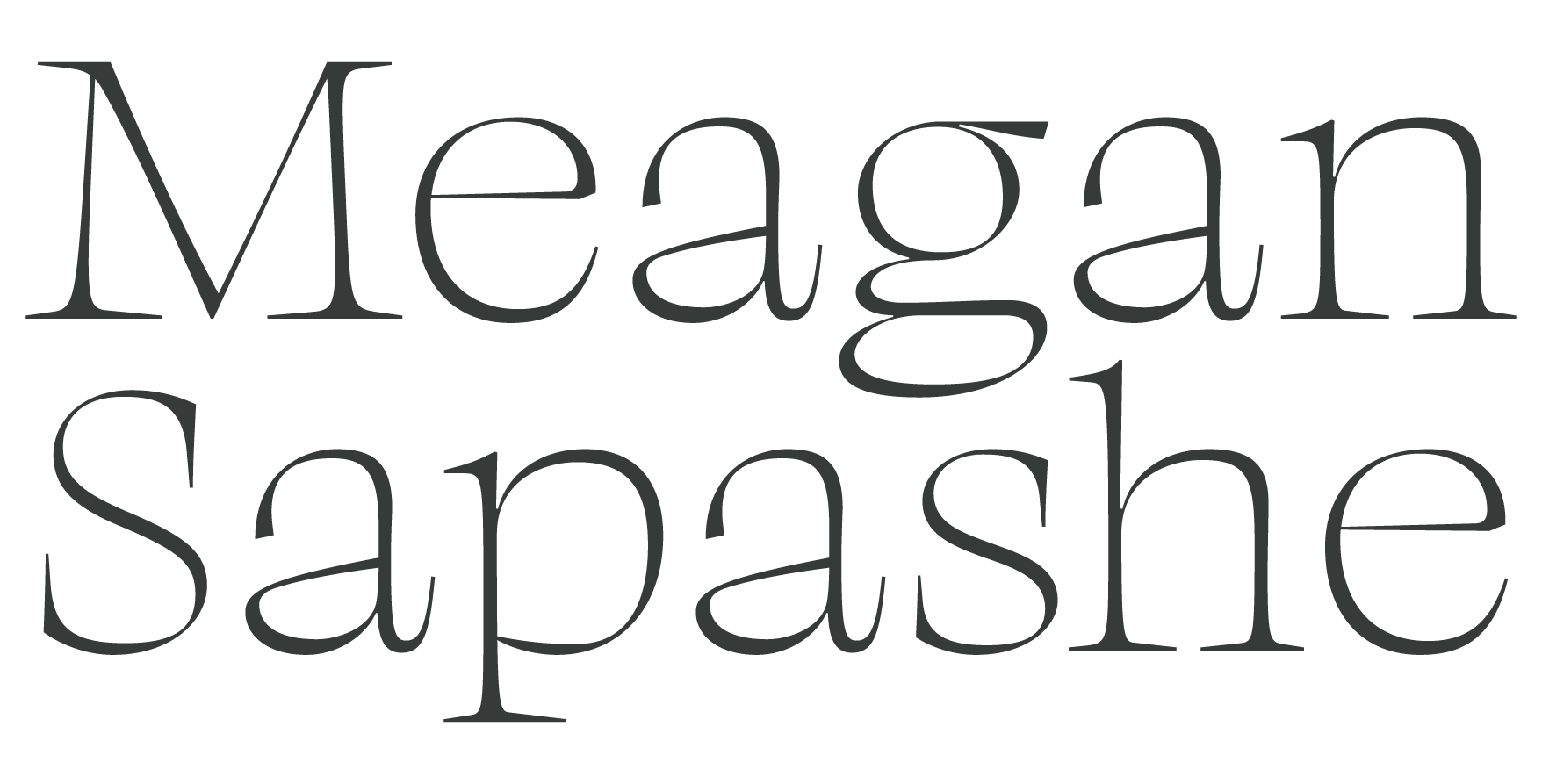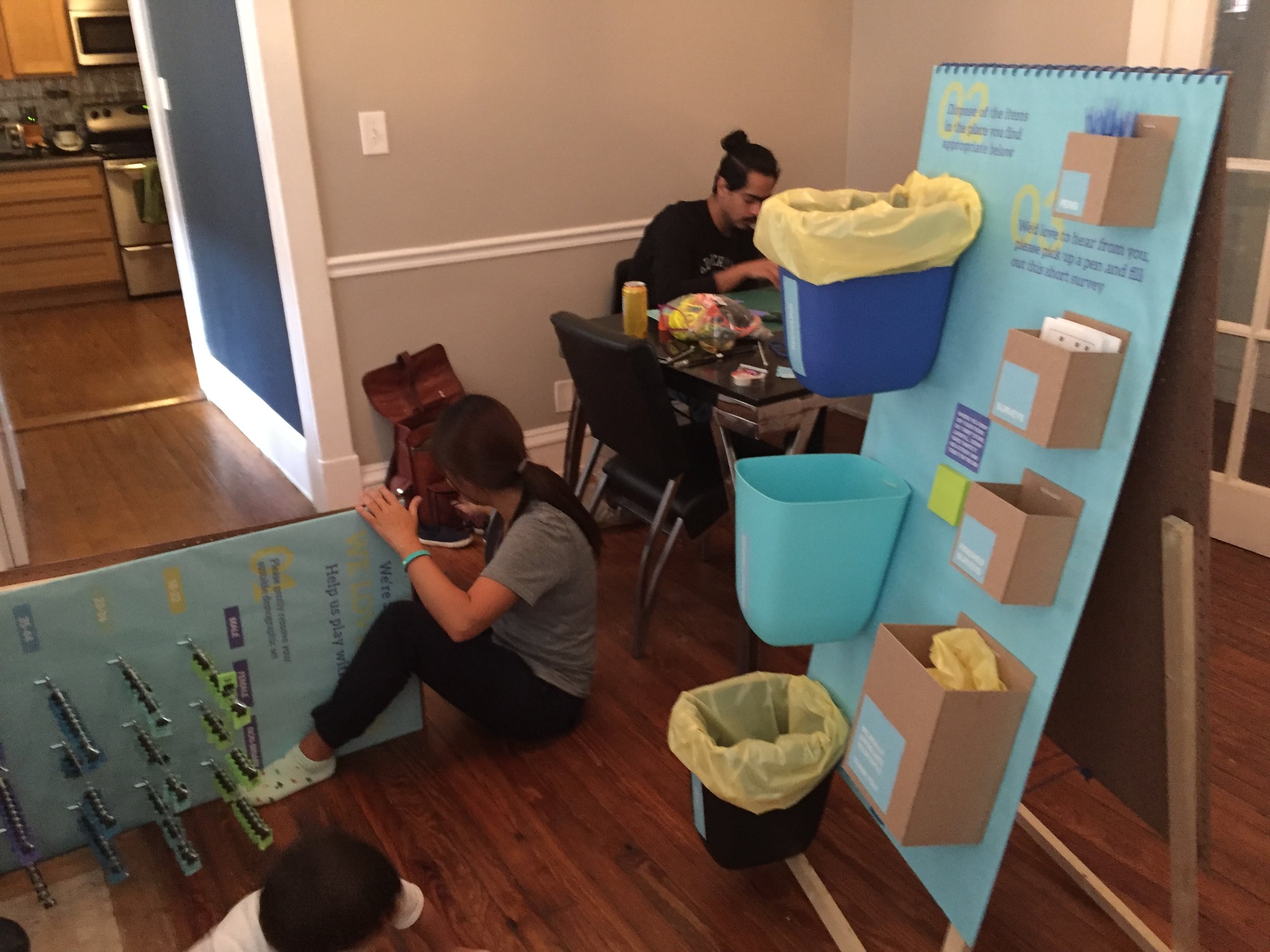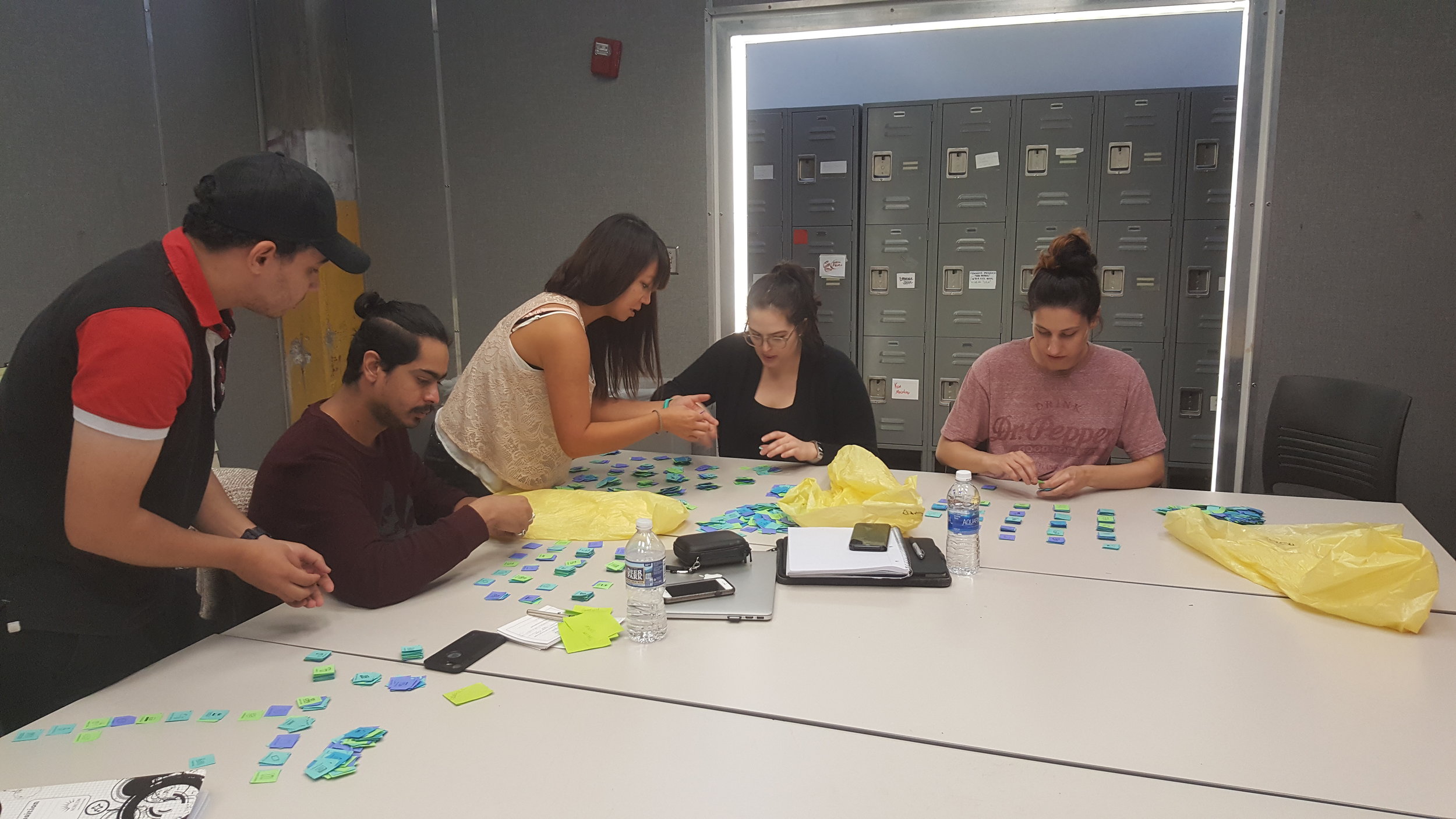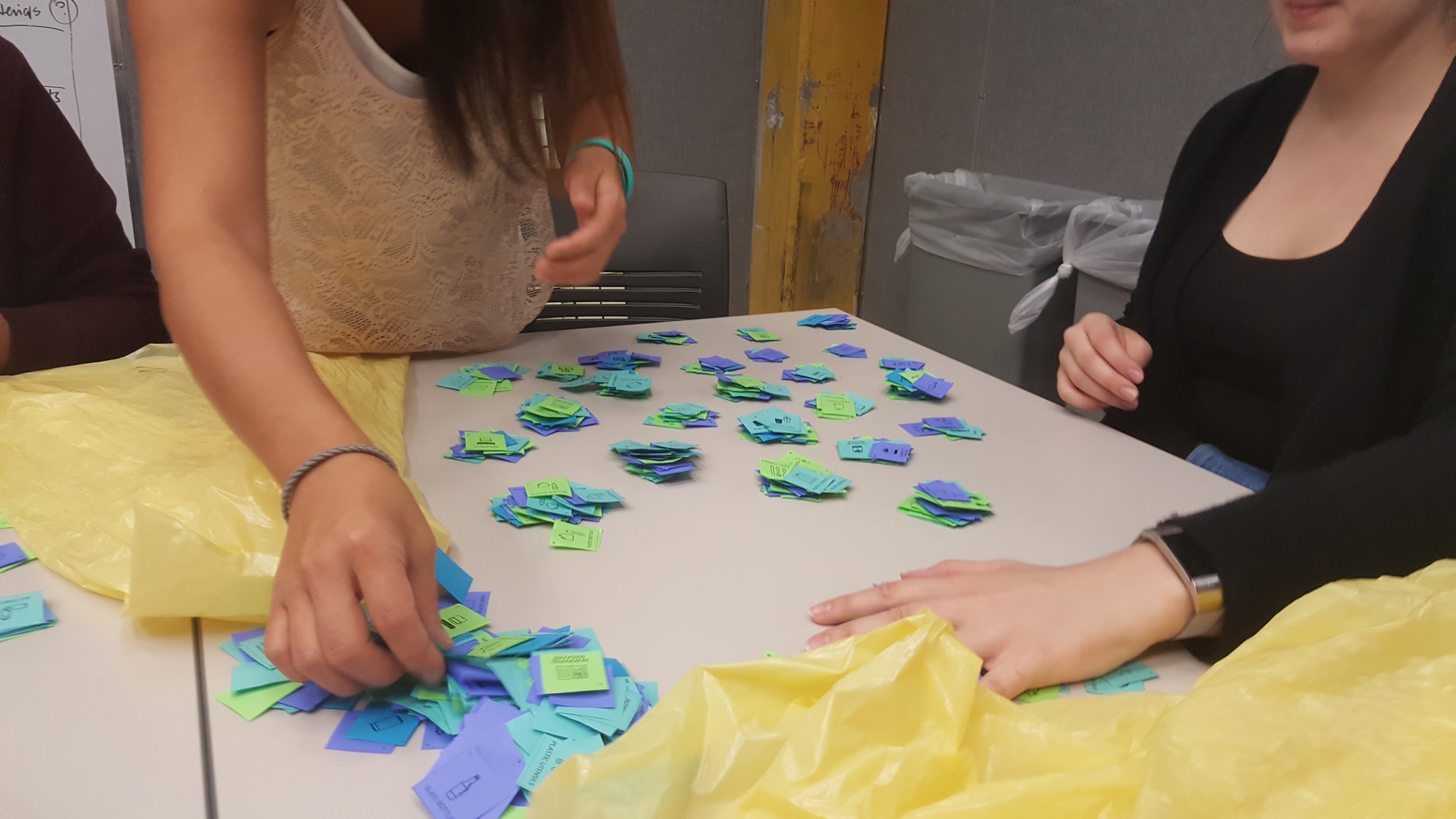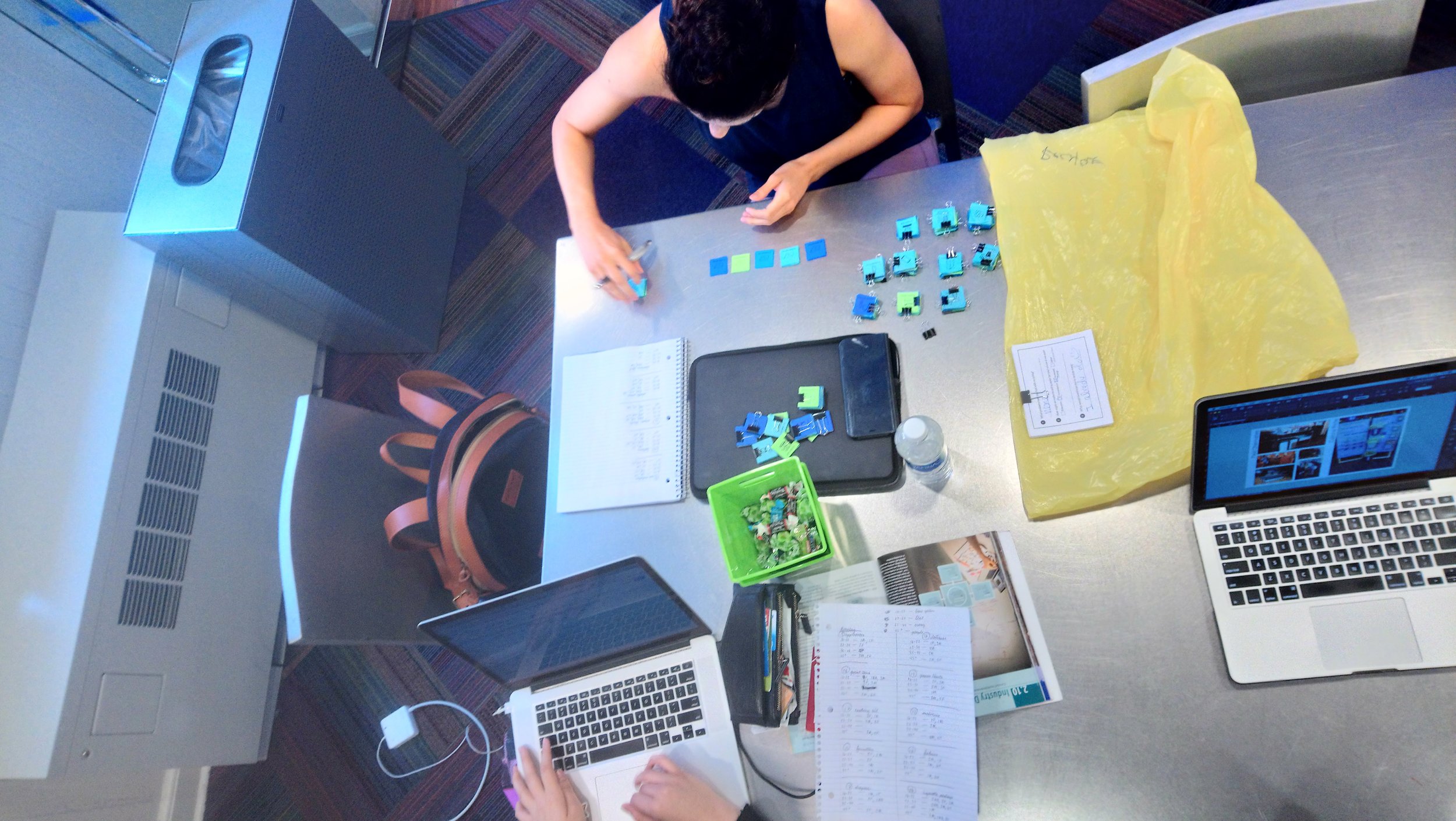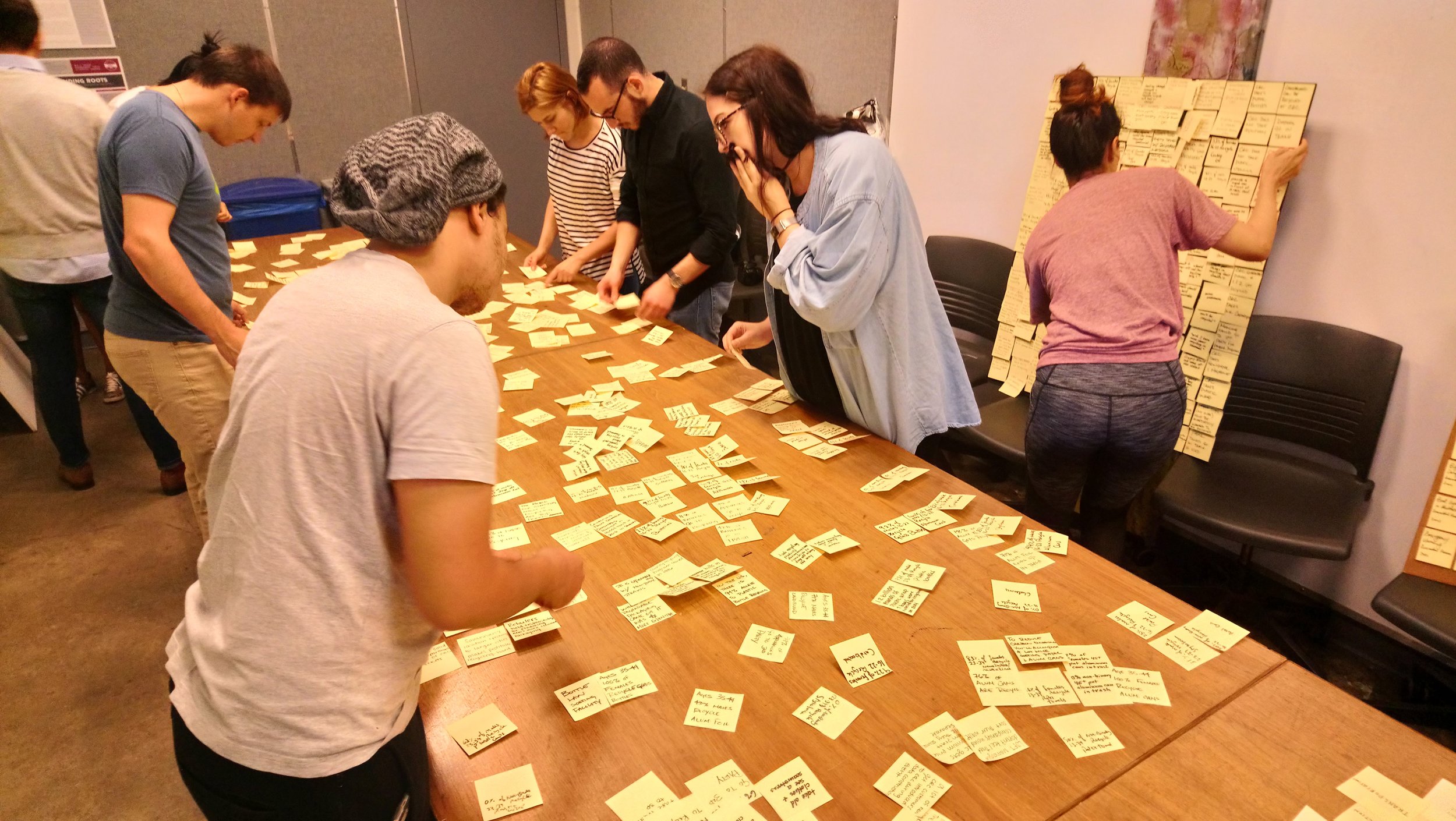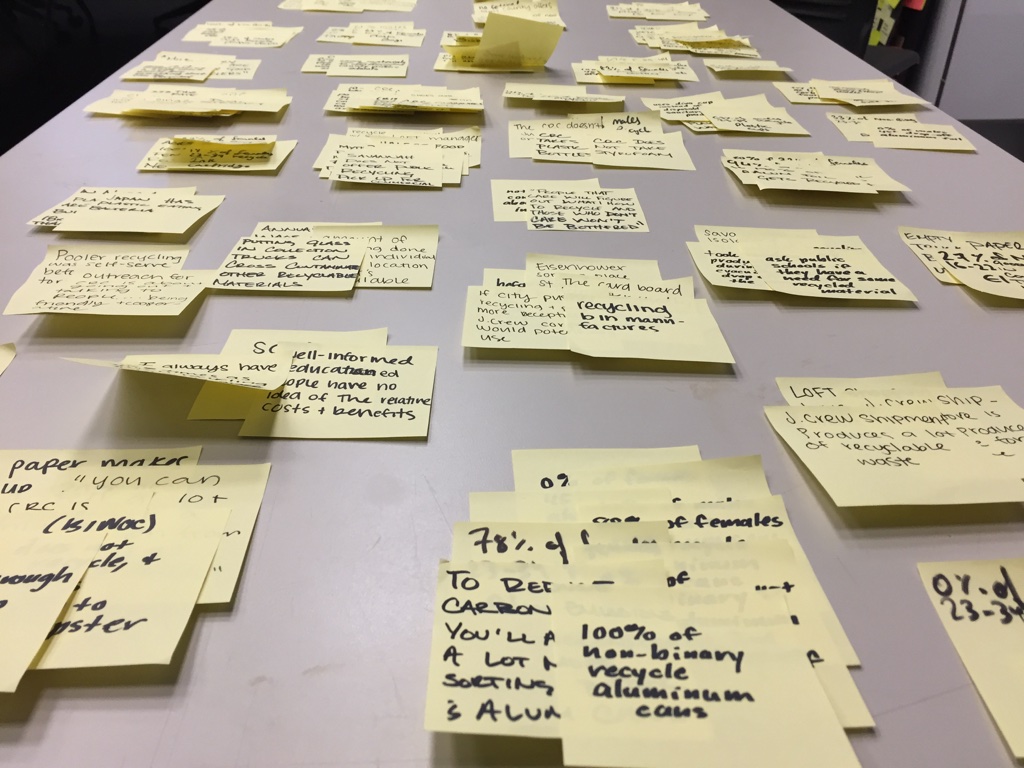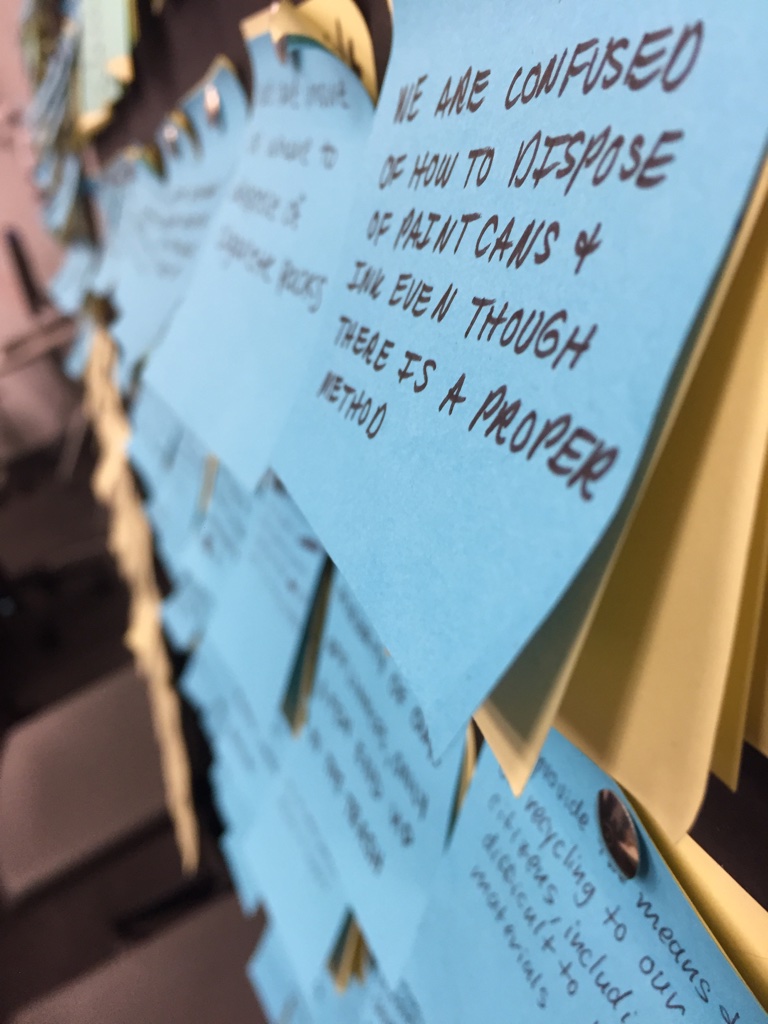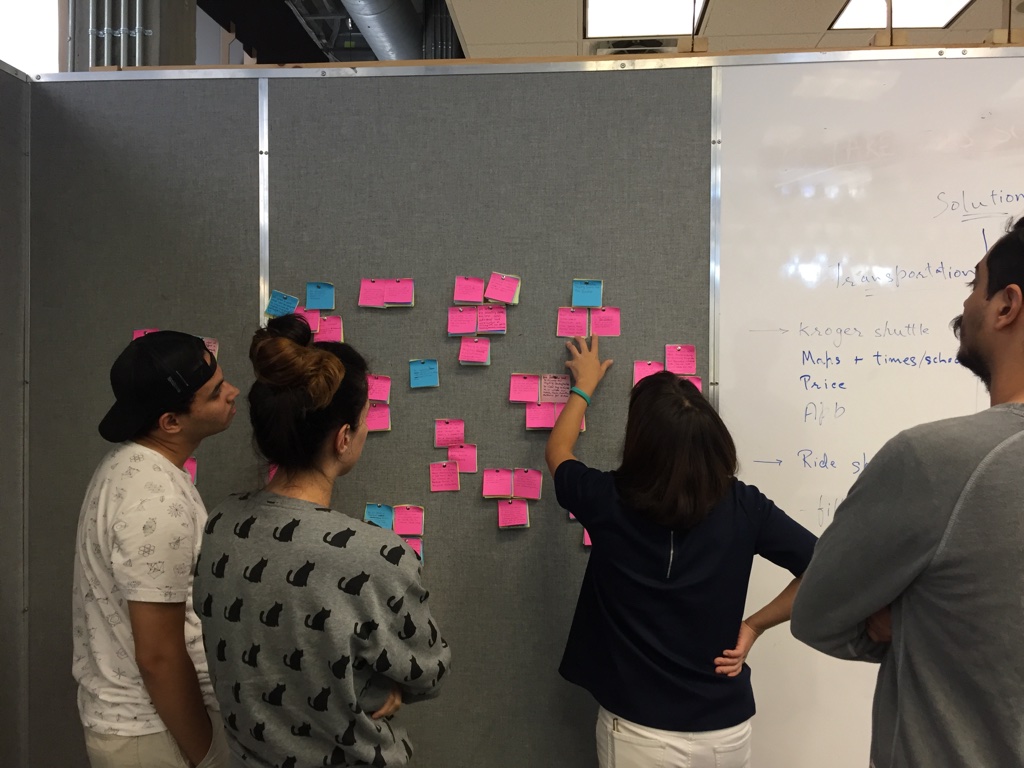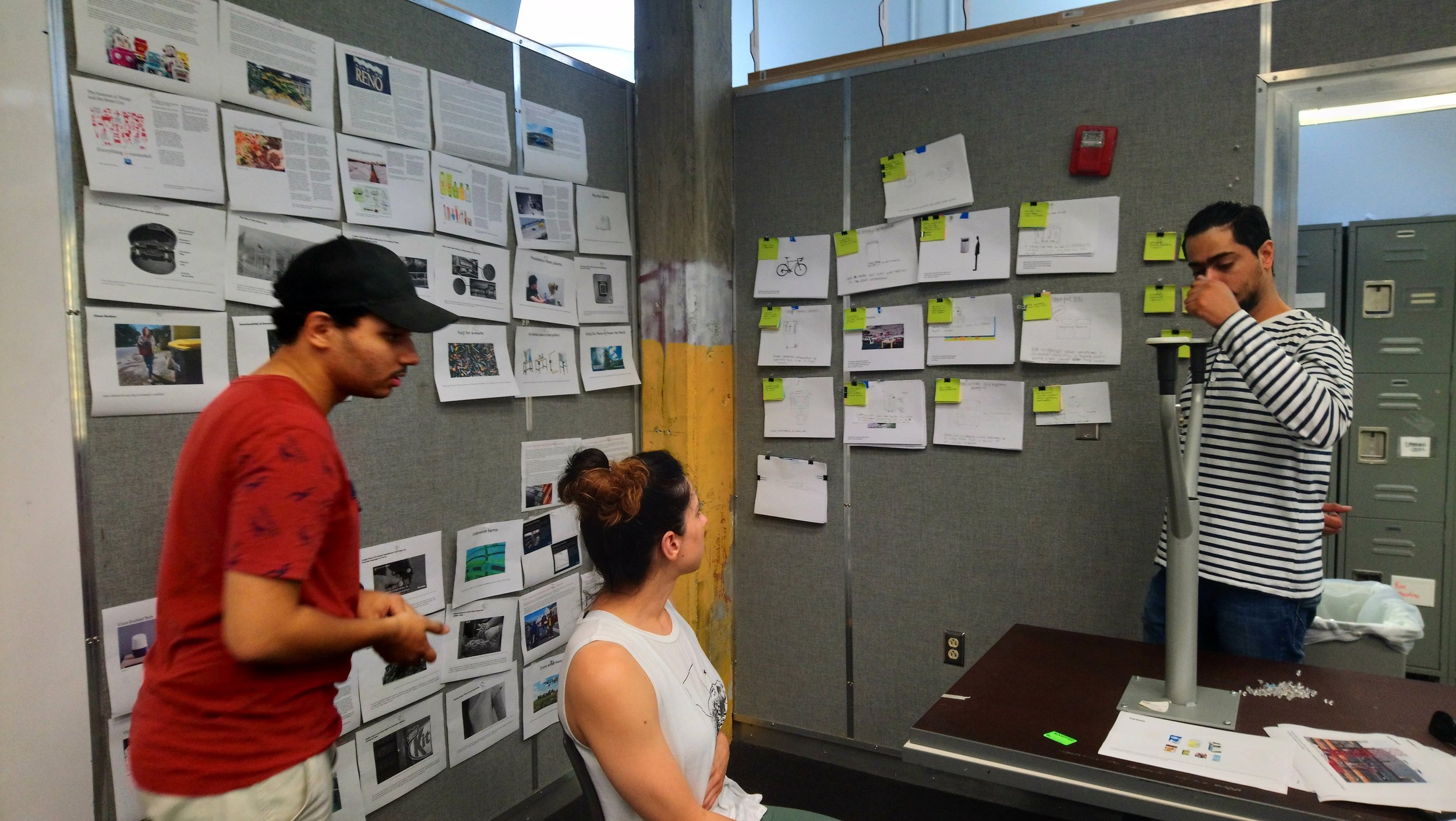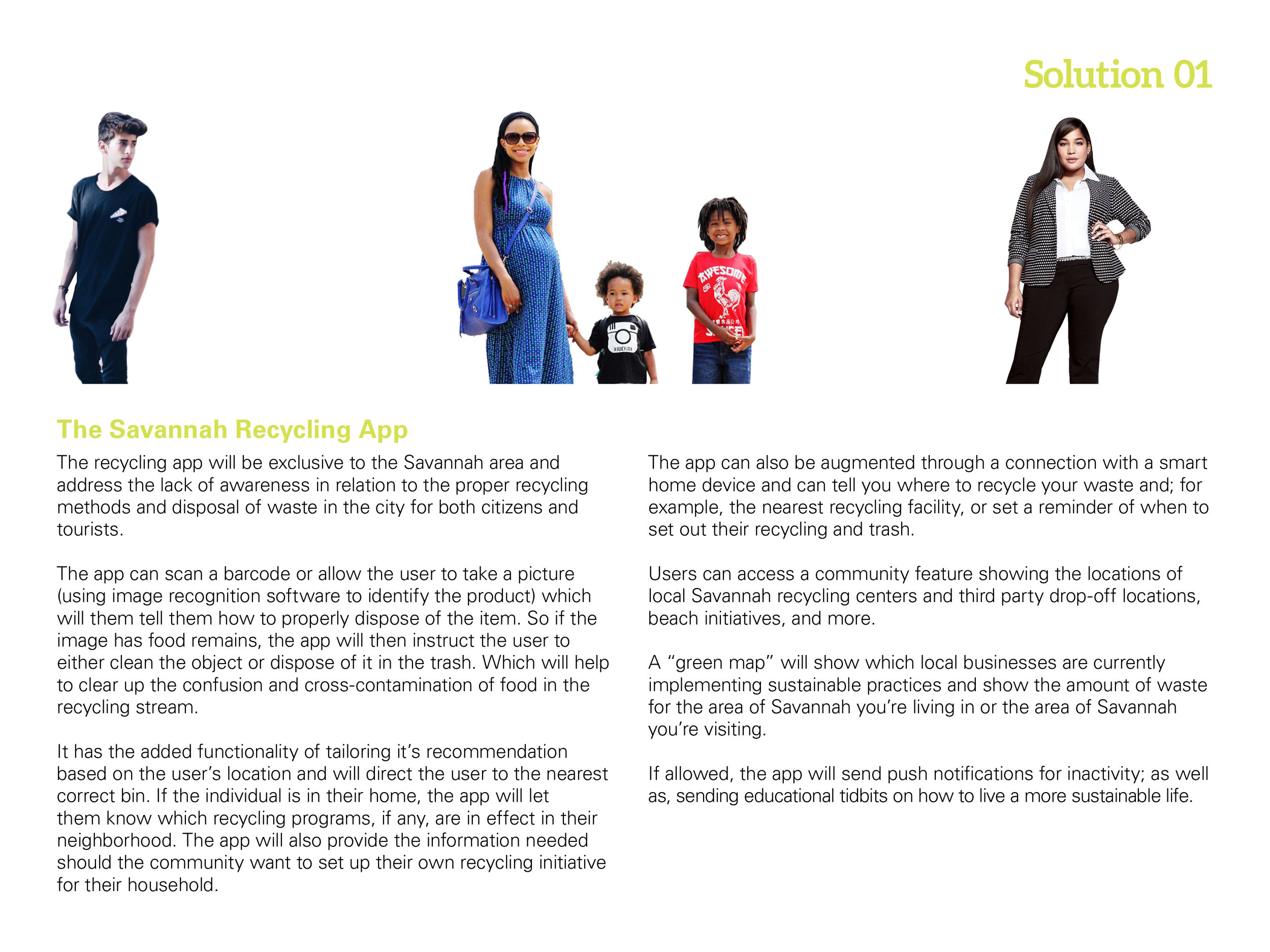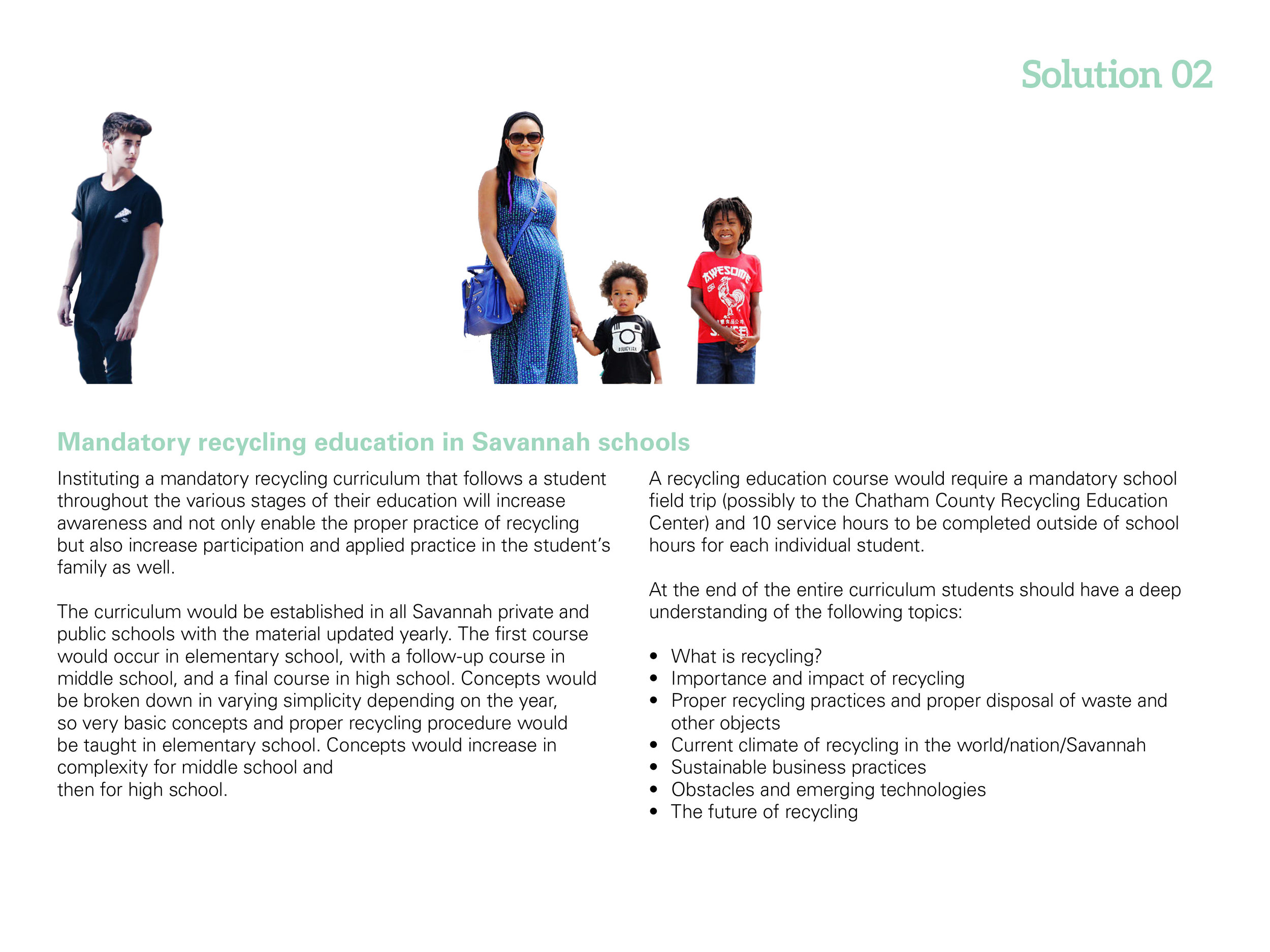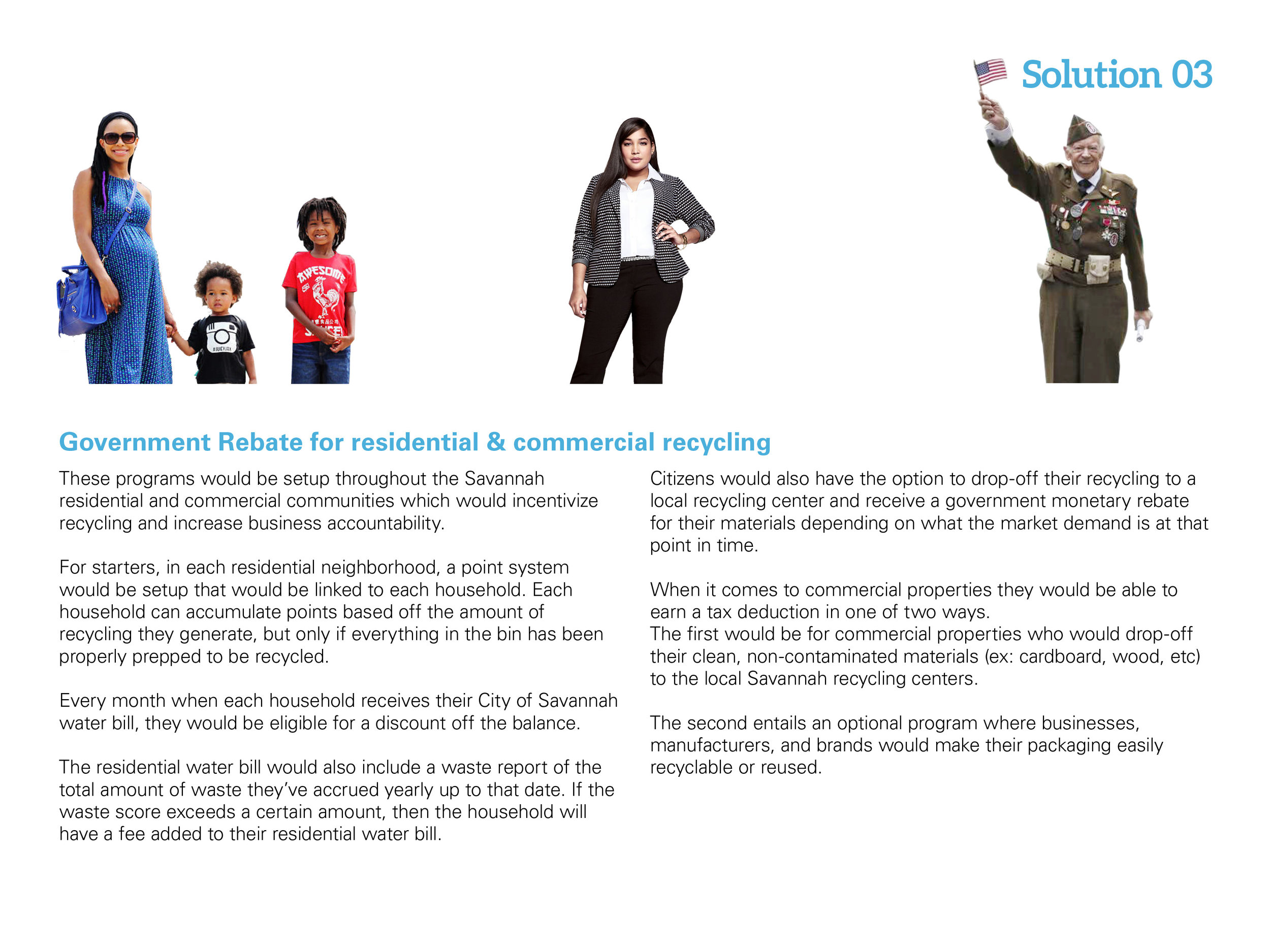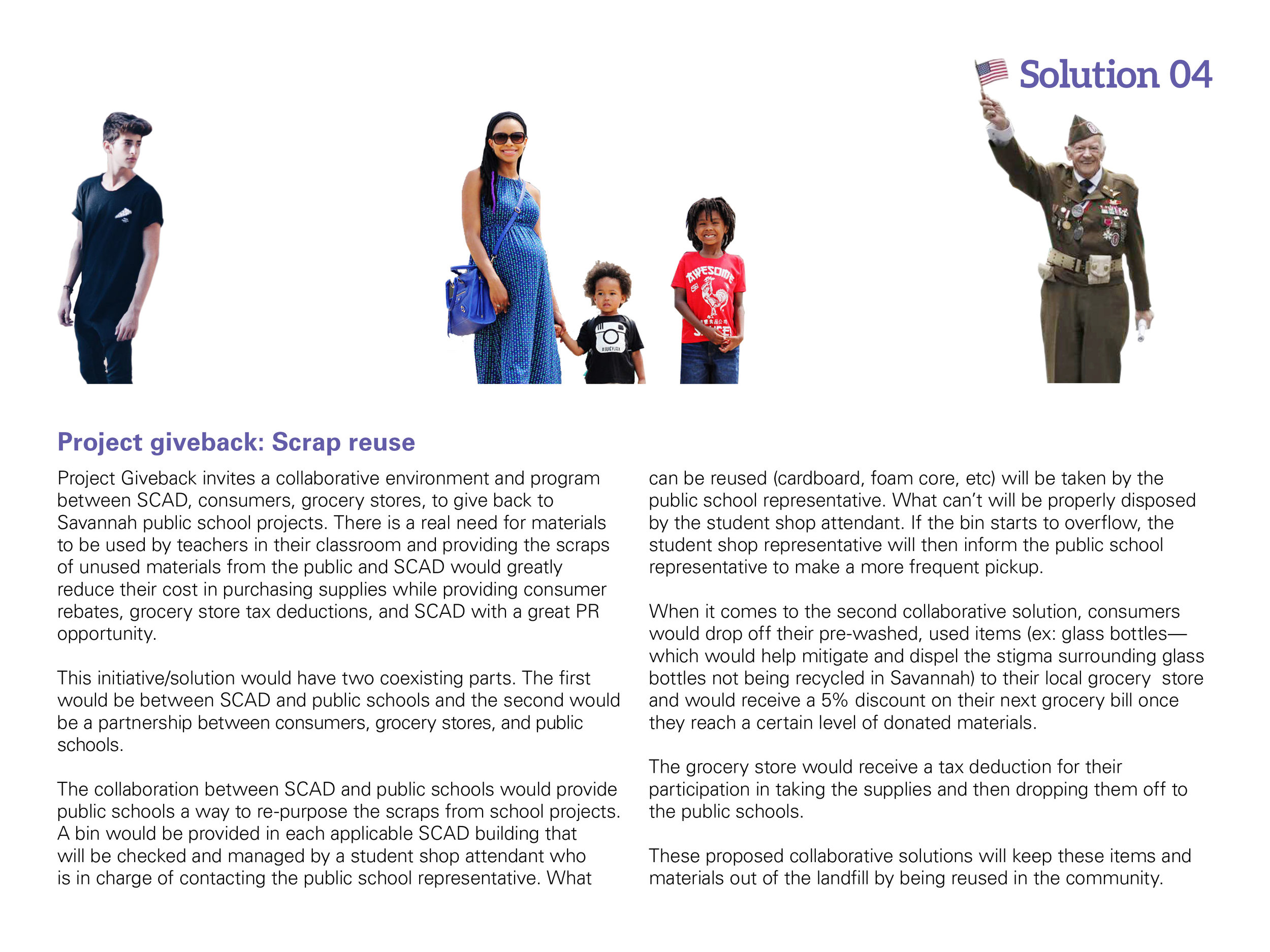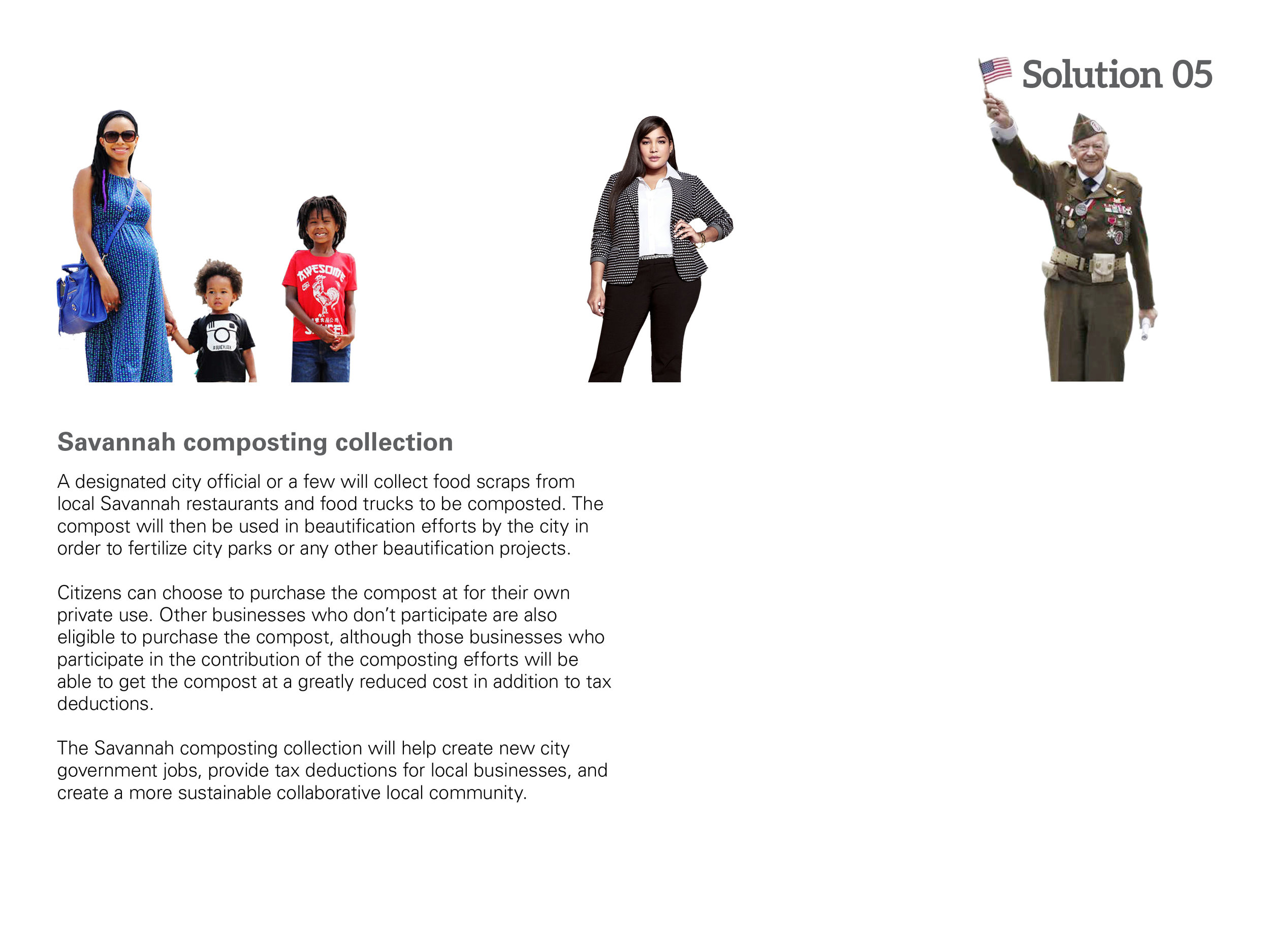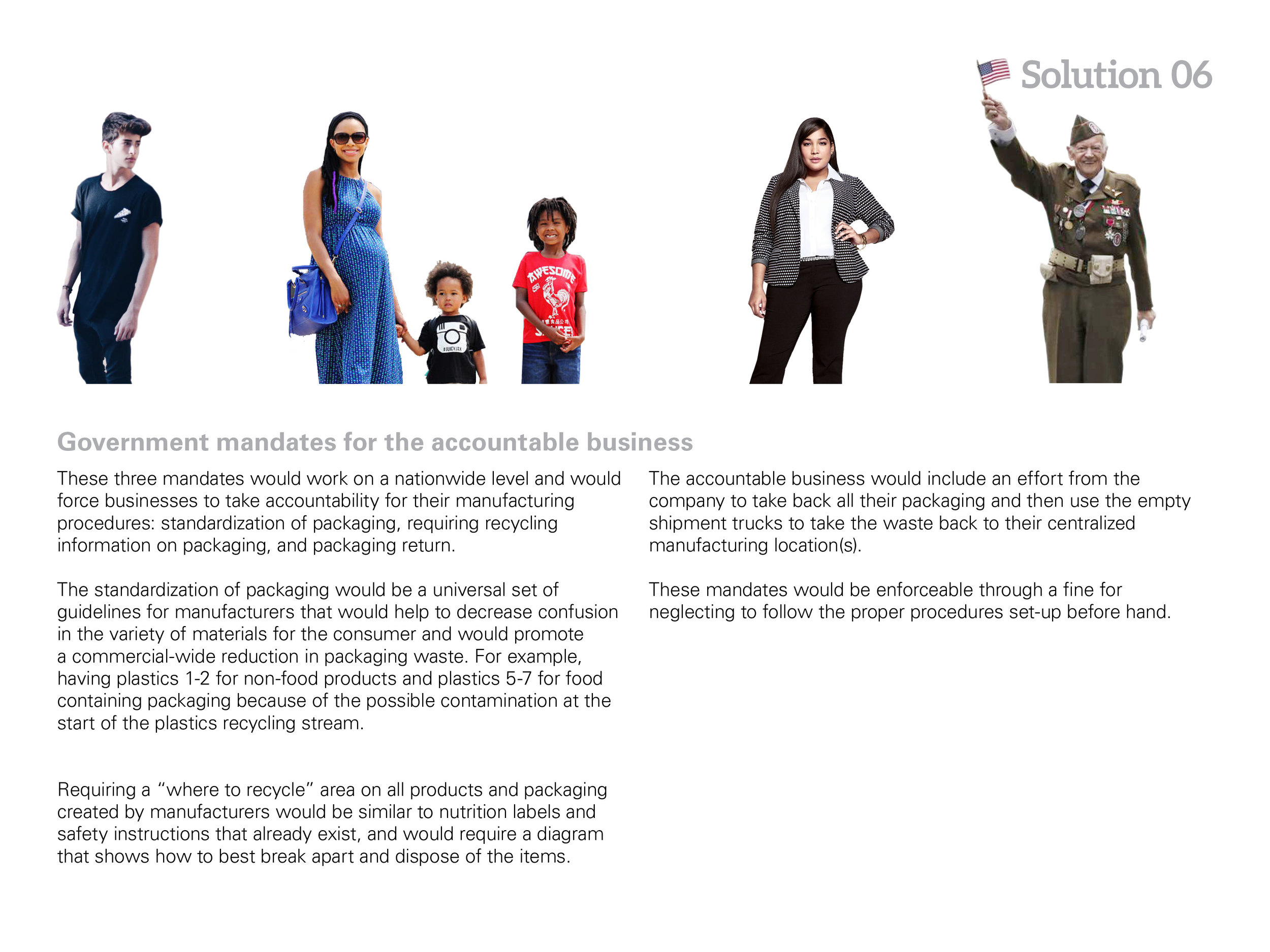The Local Cultural of Recycling
An exploration into design research using a wide variety of research methodology to understand the current state of recycling in Savannah, Georgia.
A human-centered experience
This project is a result of the Methods of Contextual Research class led by Kwela Hermanns for the Savannah College of Art and Design. We were tasked with researching the local culture of a topic in the Savannah area. We decided to research the local culture of recycling.
Our initial interest in taking on this topic stemmed from a rumor that Savannah doesn’t recycle glass bottles. The process begins with secondary research, then a cultural probe to help gather data and hear from the community, their environment, and experiences when it comes to their perspective on recycling, followed by primary research where you will see various meaningful quotes pulled from a handful of our interviews conducted with a variety of Savannah cities, business managers, and county officials.
With all these data points from a variety of sources on hand, we began the process of affinitization in order to see the underlying feelings and core concepts that would bubble up to the surface to give us further insight into the local culture of recycling.
All of this lead us to propose six solutions to help mitigate waste through reuse, collaboration, and government mandates when it comes to recycling in Savannah.
Team Members
Katherine Weaver, Caroline Jakubowski, Ahmad Fathi, Viqar Riyaz Sayed, and Meagan Sapashe.
Secondary Research
After deciding upon the topic of recycling, my group and I kicked off our research exploration with secondary research. We used a variety of methods to help us organize our research, things like: Buzz Reports, Popular Media Scan, Key Facts, Trends Matrix, Convergence Map, From...to Exploration, and Offering Activity Culture Map. Personally, I worked on the Popular Media Scan and the Trends Matrix.
Observations
After beginning secondary research we conducted a field observation. We first attempted to station ourselves at a local coffee shop in Savannah. However, after discovering they didn’t have a recycling option, we chose to explore other coffee shops and chain restaurants within the vicinity. After a 10-15 minute search, we eventually found a local coffee shop that not only offered a recycling option for their patrons, but numerous locations we could view during the duration of our observation.
Cultural Probe
In less than 4 days, we built a cultural probe to communicate and gain feedback from the people of Savannah. We wanted to gather more insight into the lives of our community in a casual and informal manner. In the design of our probe, we were attentive to its clarity, gamification, context, ergonomic layout and overall design. We were mindful of its eye management, ability to gain maximum and relevant data sets, ease of use, clarity of instruction and of course including a thank you at the end! 110 individual participants took part in our probe, each person was asked to "throw away" an item set of 24 into three bins (recycling, third-party drop-off, and trash). Our item set consisted of things like diapers, cardboard boxes, ink cartridges, batteries, appliances, and paper cup to name a few. Our probe provided us with a maximum of 4950 individual data points.
Interviews
As a group, we managed to meet with and interview stakeholders in all walks of life. Among our gracious participants were local residents, including students, teachers, business owners, and municipal and county officials giving us a variety of different perspectives, and deeper insights into what was happening in regards to the feelings and current state of recycling in Savannah. Below is our Stakeholders Map, highlighted in purple are the stakeholders we were able to interview.
Affinitization
After completeing our research, we started our affinitization process. This process helped us get a sense of the underlying feelings and core messages within our data. These insights bubbled up to the surface, giving us a deeper insight into recycling in Savannah. This process began by writing over 500 individual data points on yellow sticky notes, once this was completed we affinitized these stickies based upon intuition, trying to stay away from key-word associations and keeping groups under 8 stickies. Once this process was completed, we began to write blue sticky notes for the emergent clusters, this consisted of writing representational statements in the voice of the user for each set, to help us understand what matters to the user. When that was completed we affinitized again, this time using the blue sticky notes, trying to stay away from key-word associations and keeping groups under 5 stickies. Once completed, we wrote a representational statement in the voice of the user for each cluster, this time on a pink sticky note, revealing key issues important to the user. Affinitizing one last time, we grouped the pink sticky notes together based on intuition and also key words this time around, after completing affinitization we wrote a final green sticky note to reveal core stories or insights, not necessarily in the voice of the user. Finally, we grouped together our green stickies with trend research and our quickly sketched "parking lot" ideas to help us further our insights and understanding of potential solutions.
Solutions
After completing the research and affinitization process, my team proposed six potential solutions. To help us better position our solutions, we created four personas to help keep us focused on the users.
A full process book and video of our final presentation are available upon request.
